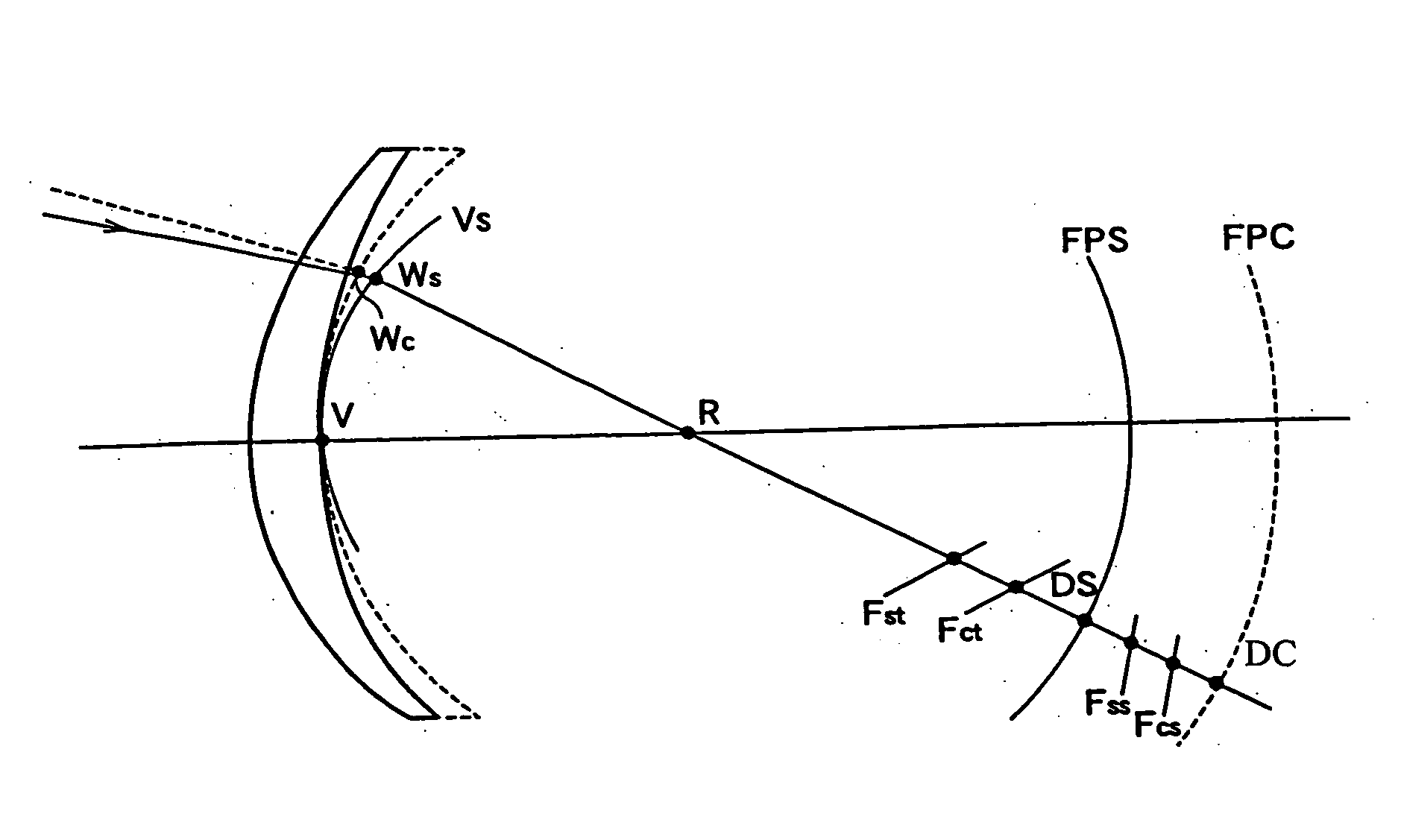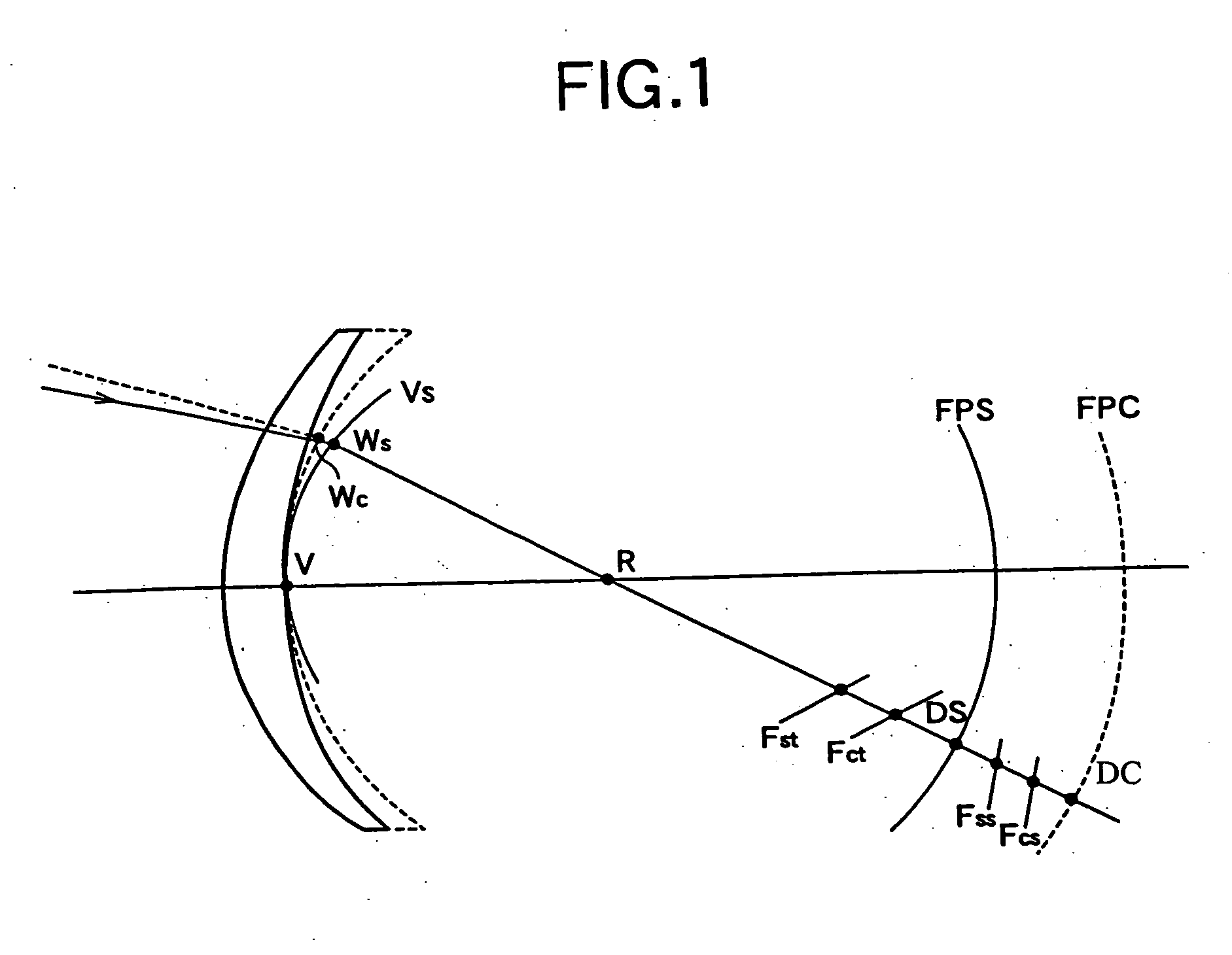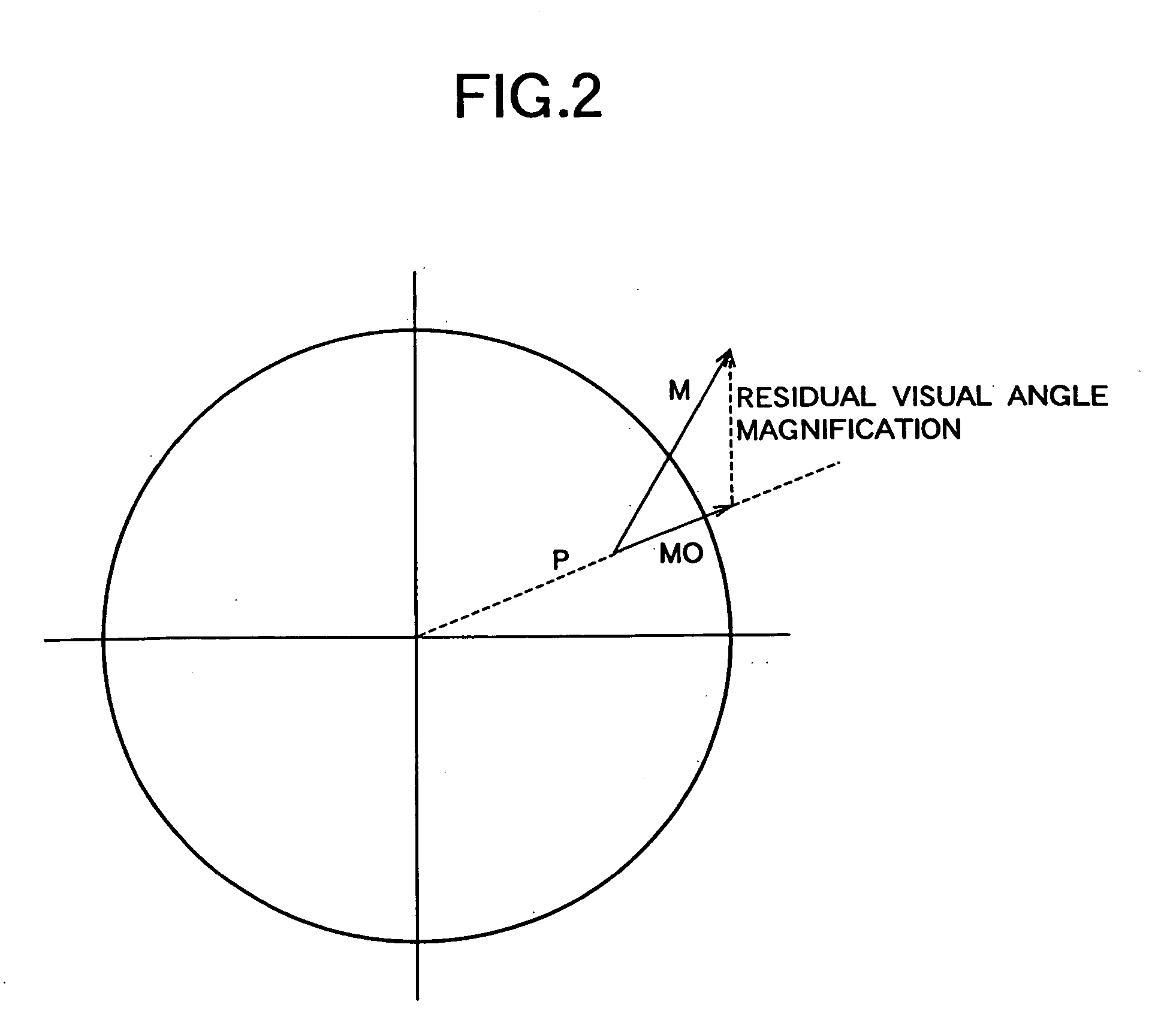Spectacle lens designing method and spectacle lens
a technology of spectacle lens and designing method, which is applied in the direction of spectacle/goggles, instruments, eye diagnostics, etc., can solve the problems of insufficient evaluation function in the optimization calculation, lack of precision in surface expression, and insufficient optical surfa
- Summary
- Abstract
- Description
- Claims
- Application Information
AI Technical Summary
Benefits of technology
Problems solved by technology
Method used
Image
Examples
example 1
In Example 1, a spectacle lens is designed using the evaluation function on visual acuity of the present invention, and the outline of the designing procedure thereof will be explained below.
(Step 1): To Set a Basic Design Lens Form of Front and Rear Refractive Surfaces
In this example, a bi-aspherical lens form which has the highest degree of freedom of designing is selected, with the front surface being an aspherical surface which is axially symmetrical and expressed by the above equation (q) and with the rear surface being an aspherical surface expressed by the above equation (r).
(Step 2): To Set Fixed Conditions and Variable Conditions of a Shape Determining Factor Parameter
The design conditions are, in the prescription values, a spherical diopter is −7.00 D, a cylindrical diopter is −2.00 D, a refractive index (ne) is 1.7, a lens diameter is 75 mm, and a lens center thickness is 1 mm, as shown in FIG. 7.
In the above aspherical surface equations (q) and (r), k(θ) is 0 ...
example 2
In Example 2, an evaluation function on the residual distortion aberration DIST is further added to Example 1 to design a spectacle lens. Since the lens does not produce visual acuity and the optimal solution cannot be obtained when only the residual distortion aberration DIST is used in the aforesaid merit function equation (p), the logMAR visual acuity value and the residual distortion aberration DIST are balanced in the equation (p).
In the equation (p), a=1, b=0, c=0.02, u=1, and w=1, and the equation (j) is used for the equation for the visual acuity evaluation function logMAR.
The equations (q), (r) are used for the bi-aspherical surface equation, k(θ) is 0, and the equation (t) is applied for a(n, θ).
The data in FIG. 5 in Example 1 are used for the front surface. Though this is not a suitable condition for greatly improving the residual distortion aberration DIST since a fixed condition is set for the front and rear surfaces the optimization calculation is done under the...
PUM
 Login to View More
Login to View More Abstract
Description
Claims
Application Information
 Login to View More
Login to View More - R&D
- Intellectual Property
- Life Sciences
- Materials
- Tech Scout
- Unparalleled Data Quality
- Higher Quality Content
- 60% Fewer Hallucinations
Browse by: Latest US Patents, China's latest patents, Technical Efficacy Thesaurus, Application Domain, Technology Topic, Popular Technical Reports.
© 2025 PatSnap. All rights reserved.Legal|Privacy policy|Modern Slavery Act Transparency Statement|Sitemap|About US| Contact US: help@patsnap.com



